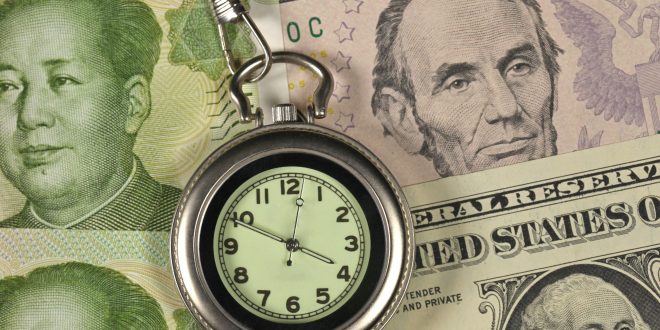The headlines of the US election were dominating the markets past week with the intense competition between Trump and Biden, which Biden settled by a difference of votes, here are the highlights of the past week.
The US Federal Reserve decided to keep interest rates near zero at 0.25% while expanding its bond-buying program to support the US economy.
The United States added more jobs than expected last month, with the unemployment rate dropping to 6.9%. Nonfarm Payrolls (NFP) in the US rose by 638,000 in October. This reading followed September’s increase of 672,000 (revised from 661,000) and beat the market expectation of 600,000.
The United States’ goods and services deficit declined by $ 3.2 billion to $ 63.9 billion in September, the data published jointly by the US Census Bureau and the US Bureau of Economic Analysis showed on Wednesday. This reading missed the market expectation for a deficit of $ 63.8 billion by a small margin.
In another indication of the improved economic growth rate, factory orders in the United States increased by 1.1% last September, compared with an increase of 0.6% in August.
The US Energy Information Administration said that crude oil inventories in the United States fell significantly in the past week, while gasoline inventories rose and distillate stocks decreased.
Crude stocks fell by 8 million barrels in the week to October 30, compared to analysts’ expectations for an increase of 890,000 barrels.
The administration said that the consumption of crude oil in refineries increased by 164 thousand barrels per day. Refinery operating rates rose 0.7 percentage points.
As for the performance of US stock indices, it witnessed the best performance in 7 months, as the Dow Jones Industrial Average achieved a gain of 7% to 28323, and the S&P 500 rose 7.3% to 3,309.4. The biggest rise was the Nasdaq Composite, which rose by 9% to 11895.
Europe
The data of the manufacturing and service PMI in the euro bloc was on top of the data released last week and showed that the final estimates of the manufacturing PMI in Germany, which represents a fifth of the German economy, rose to 58.2 in October, the highest reading since February 2018. For France, The Manufacturing PMI reading was revised to 51.3 in October.
The Bank of England’s (BOE) Monetary Policy Committee (MPC) decided to leave the benchmark interest rate unchanged at 0.10% at its November policy meeting, as the second nationwide lockdown kicks-in this Thursday.
The BOE expanded the Quantitative Easing (QE) program by £ 150 billion to £ 895 billion.
On other hand, US investment bank Goldman Sachs sharply cut its economic forecast for Europe in Q4 of the year after a jump in COVID-19 cases prompted major countries to announce partial closures in November.
The bank said it expected real GDP in the euro area to shrink 2.3% in Q4, a major revision to its previous forecast of 2.2% growth.
The bank lowered the forecast for GDP growth in Britain to -2.4% from a previous forecast of 3.6% growth.
In Asia, the Reserve Bank of Australia cut the interest rate to 0.10%, in line with expectations from 0.25%.
The bank cut its target for a three-year bond yield to 0.1% following the monthly board meeting and indicated its intention to purchase $ 100 billion in long-term government debt.
Bank of Japan Governor Haruhiko Kuroda said that the central bank has no plans to adjust its purchases of ETFs. Kuroda also fending off criticism its massive buying that drained liquidity and distorted market prices.
 Noor Trends News, Technical Analysis, Educational Tools and Recommendations
Noor Trends News, Technical Analysis, Educational Tools and Recommendations





